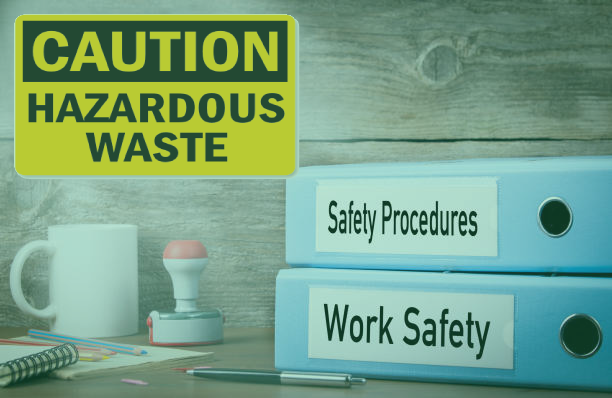
Which Category of Hazardous Waste Generator Do You Fall Into?
Environmental Management Techologies
As a business owner, you probably already know that the term ‘generator’ is any person or entity who produces hazardous waste as listed or characterized in part 261 of title 40 of the Code of Federal Regulations (CFR). However, you may not be aware that generators produce waste in different quantities, prompting the EPA to establish three categories of hazardous waste generators. Are you aware of which category your organization falls into?
The Three Categories of Hazardous Waste Generators:
Very Small Quantity Generators
Small Quantity Generators
Large Quantity Generators
The volume of hazardous waste each generator produces in a calendar month determines which regulations apply to that generator. We’ve put together more information about each category of generator below.
Learn more about the hazardous waste management services that Environmental Management Technologies has to offer today!
Very Small Quantity Generators (VSQGs)
Very Small Quantity Generators (VSQGs) generate 100 kilograms or less per month of hazardous waste or one kilogram or less per month of acutely hazardous waste. Requirements for VSQGs include:
VSQGs must identify all hazardous waste generated.
VSQGs may not accumulate more than 1,000 kilograms of hazardous waste at any given time.
VSQGs must ensure that hazardous waste is delivered to a person or facility who is authorized to manage it.
For more information on the complete description of the VSQC, the EPA provides in-depth information on this page: Very Small Quantity Generators (VSQGs)
Small Quantity Generators (SQGs)
Small Quantity Generators (SQGs) generate more than 100 kilograms but less than 1,000 kilograms of hazardous waste per month. Some major requirements for SQGs include:
SQGs may accumulate hazardous waste on-site for 180 days without a permit (or 270 days if shipping a distance greater than 200 miles).
The quantity of hazardous waste on-site must never exceed 6,000 kilograms.
There must always be at least one employee available to respond to an emergency. This employee is the emergency coordinator responsible for ensuring all emergency response measures are enacted. SQGs are not required to have detailed, written contingency plans.
For a complete rundown on all small quantity Generators requirements, you can visit the EPA’s page: Small Quantity Generators (SQGs)
Large Quantity Generators (LQGs)
Large Quantity Generators (LQGs) generate 1,000 kilograms per month or more of hazardous waste, or more than one kilogram per month of acutely hazardous waste. Some major requirements for LQGs include:
LQGs may only accumulate waste on-site for 90 days. Certain exceptions may apply.
LQGs do not have a limit on the amount of hazardous waste accumulated on-site.
Hazardous waste that is generated must be managed in tanks, drip pads, or containment buildings, which are subject to the requirements found in 40 CFR sections 262.17(a)(1)-(4) and, specifically for drip pads and containment buildings, 40 CFR part 265, subparts W and DD, respectively.
LQGs must submit a biennial hazardous waste report to stay within compliance measures.
For a complete rundown on all requirements of LQGs, read more on the EPA’s page, dedicated to LQG companies: Large Quantity Generators (LQGs)
Learn More About Hazardous Waste Management
At Environmental Management Technologies, our focus is on helping your business stay compliant and knowledgeable about your hazardous waste and environmental service needs. If you’re looking for more information about hazardous waste generators, you can visit the EPA’s website here, or reach out to speak with an EMT representative and speak with a professional today!
